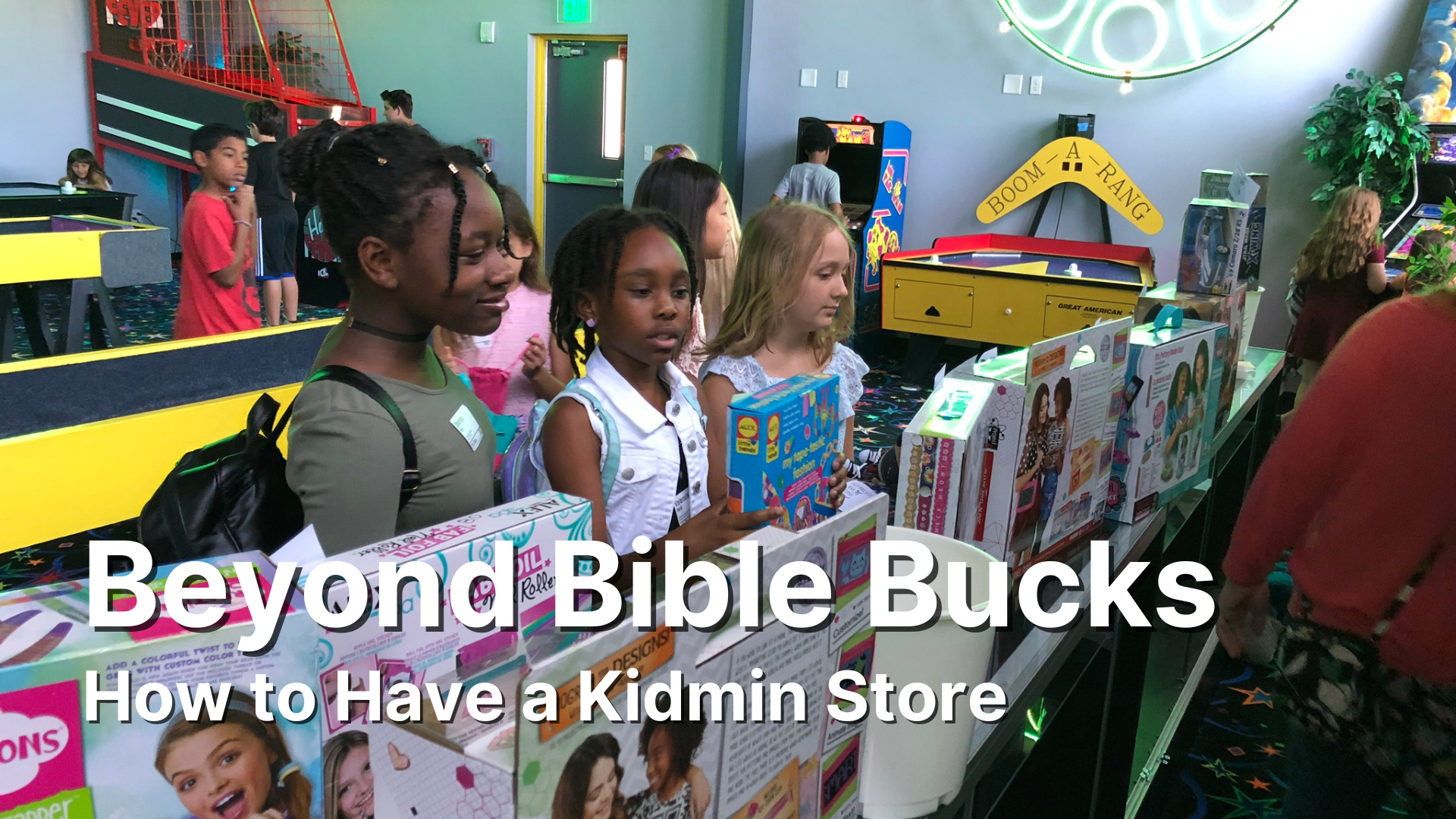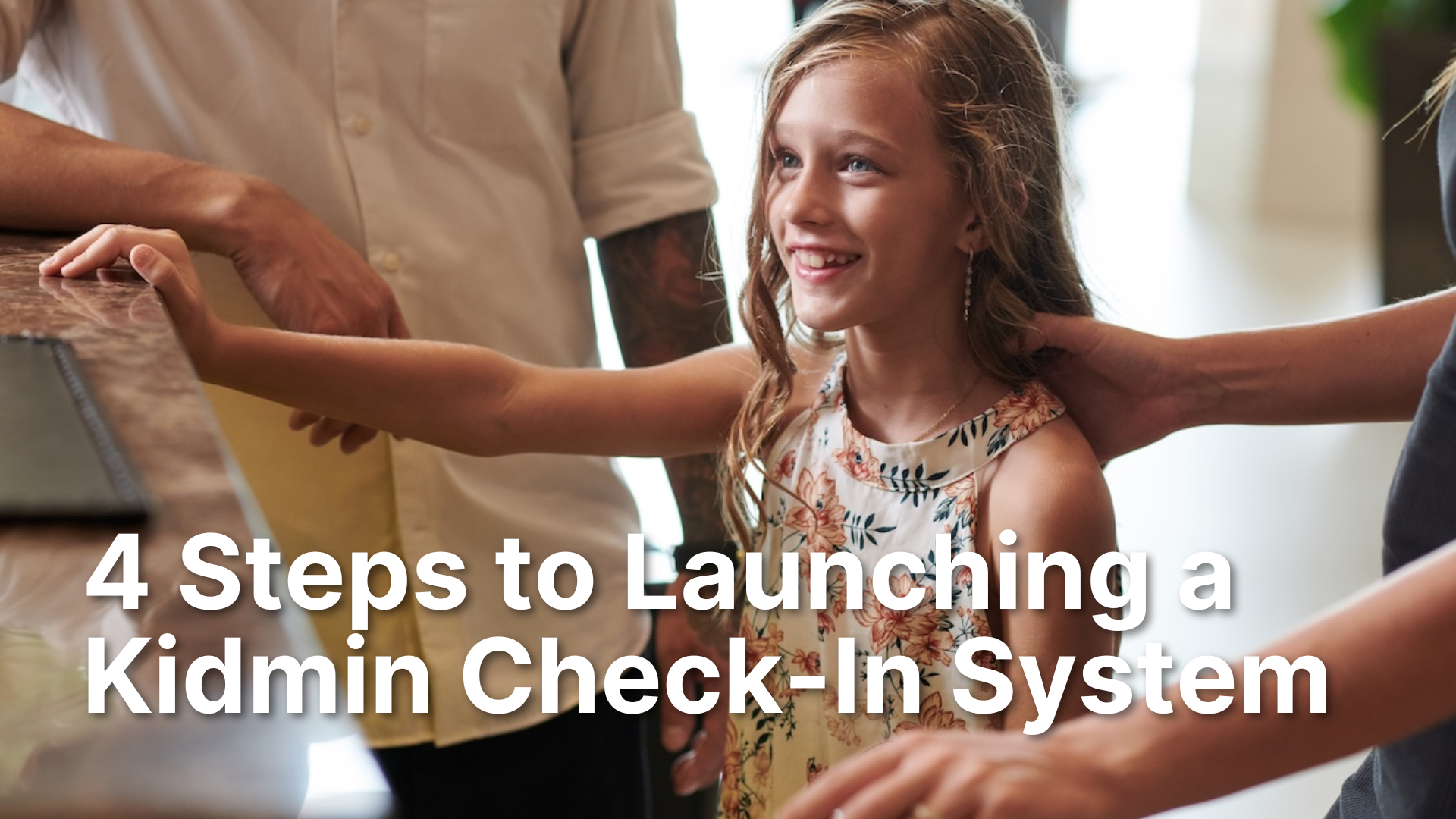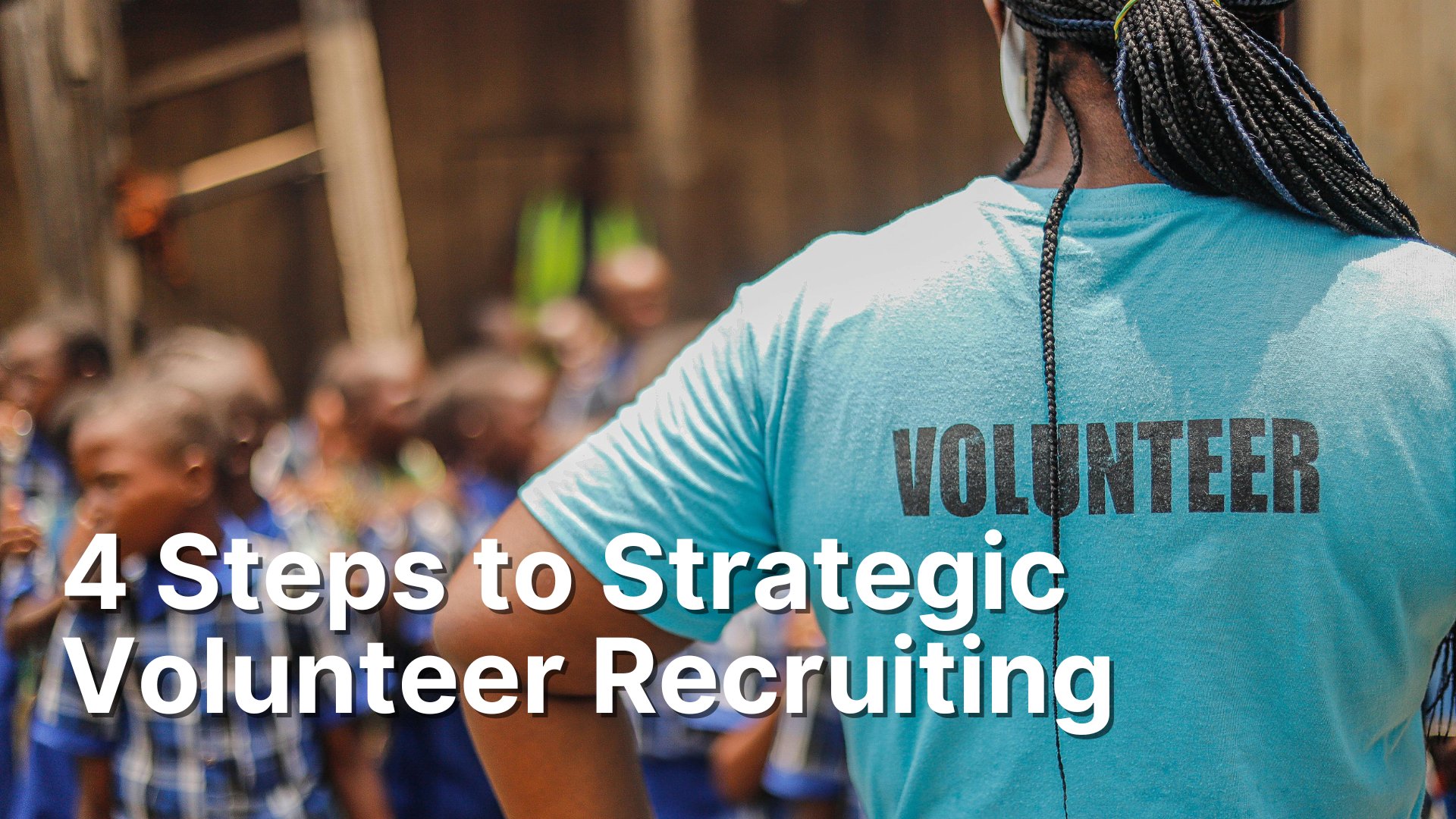Beyond Bible Bucks: How to Have a Kidmin Store
Reading your Bible, praying, inviting a friend, memorizing the Bible verse. These are all things we ask our kids to do in kidmin, but few will naturally do it without an some kind of incentive. There are a lot of ways to motivate kids to engage in these activities, and one of the more effective ways to do it is with a store.
I’ll admit for years, I pushed back on the idea. It seemed like a waste of budget, floor space and had little effect on kids. However, my mind changed when I inherited one at my third church. While I was only there for 3 years and COVID was in the middle, I found several strategies that support a successful store and more importantly motivate our kids to engage in discipleship.
1. Reward for Growth
You can reward kids for a lot of different things. Good behavior, engaging in worship, winning the game, giving the most in the offering, or coming every week. These are all good things, and I’ve participated in a few of them.
However, if I’m going to spend this much time, energy, and space on a store, then I’m going to want a return on investment. This is why I decided to reward different discipleship behaviors I’d like to see all Christians engage in. They’re based on the four connections I want every kid to do while they’re in my ministry.
Connect to God
Connect to the Bible
Connect to each other
Connect to the community
With these connections in mind, I rewarded kids for bringing offering, a Bible, a friend, and memorizing the Bible verse. In addition, every month, I had a missions offering and challenged kids to answer 10 Bible trivia questions. I gave extra points for those.
Whatever you choose, keep in mind that whatever is rewarded gets repeated. So, make sure that the things you reward have your mission and vision in mind.
2. Find the Right System
When I first started with the store, the existing system was every kid received coins for doing different things. These were essentially “Bible Bucks,” but instead of printing them, we ordered the cheap plastic coins and cloth bags from Oriental Trading.
The downside of this system was kids had to remember to bring their coins back every week and when they received new coins, which could happen at any time, they needed to hold onto them until next time. We could have kept all the coins for the kids, but my ministry had well over 100 elementary kids. That’s a lot of plastic coins to keep track of.
When we came back from COVID, I decided to do away with the coins and just give prizes away for doing one of the discipleship elements. This worked for a few months because the rewards were immediate, and no one had to keep track of anything. However, after a while, I realized I was spending hundreds of dollars every month and kids were bringing literally pennies to “buy” something from the store.
We’d lost the purpose of the whole program.
After brainstorming with my lead team, we settled on a compromise. We created a “punch card.” It’s a postcard sized card with 12 dots and the list of items kids can receive punches for. Instead of having one for each kid, whenever a kid did one of the desired behaviors, we’d fill out a new card, mark it, and file it in an index card box in alphabetical order.
This way we didn’t have to keep track of every kid’s card, and we could easily find out how many “punches” each kid earned.
In addition, we changed our pricing structure. Originally, some items were so expensive that kids would have to complete every task… every week…. for years! The prizes were really cool and a great goal for many kids. However, they were so unattainable many of the prizes collected dust after sitting for literally years. When we first came back from COVID, I marked everything down to doing one behavior. I’ve already talked about why that didn’t work. When we rolled out the punch cards, a kid could buy the best stuff if they did at least 3 things every week for a month. If they wanted, they could cash in their punches in the first week and get a small box of candy.
You don’t have to do my card. I’ve seen other churches use a chore app or a spreadsheet to keep track. Whatever you use, make sure it’s easy to use, simple to hand out rewards, and doesn’t take up too much space.
3. Choose the Right Rewards
If you’re going to do a store and incentivize kids to do these things, then the rewards need to be something they actually want. This can be tough to do with kids ranging from 5 to 11, but it is possible. My go to was candy. No matter what age you are, people love candy.
Fun fact: adults eat more candy on average than kids do.
For my candy, I didn’t want to provide bags or small packages like what you see at the checkout counter. I wanted to provide something that kids’ parents would most likely say no to if the kid picked it off the shelf. So, I’d get the movie theater style candy boxes. These cost a dollar or two, look great on the shelf and are easy to stack and display. In addition, I’d buy candy tubes for $5. These are huge and have a great wow factor. Naturally these candy tubes cost more than the boxes.
I had a large floor space for my store, which included two glass cases, the kind you’d see at Chuck E. Cheese’s. So, I’d fill these with cheap toys and electronics. Five Below was great for this. I could get candy, Bluetooth headphones, and a knock off version of Connect Four, each for $5. Their prices have gone up since then, but if my kidmin had a store now, I’d still stock it with their stuff because it’s so affordable.
I found the younger kids wanted the toys, games, and plushies, while the older kids wanted electronics like headphones, speakers and lights. Everyone wanted the candy.
4. Measure Impact
One of the major shortcomings of the coin system was that it was very difficult for me to keep track of who got what and how much I was giving away. My check-in volunteers handled giving out the coins, and my store volunteers gave away the prizes. There wasn’t a lot of communication between the two teams.
After a year or so of bouncing between the teams, I started seeing the same few kids over and over. I suspected that not many were engaging with the program, so I had my check-in and store team write down the names of each kid who earned and bought something. I discovered that less than 1% of my kids were participating in the discipleship side of the program. Most were just cashing in coins they earned from my predecessor or received for good behavior during service.
When we decided to overhaul the system, I knew we needed something to keep better track of who and how many were participating. Thankfully the punch cards solved this problem. Each card had the name and how many punches the kid had earned. Whenever a kid wanted to redeem their full card, my volunteers would mark it and put it in with my visitor cards.
Then on Monday morning as I entered my numbers in my dashboard, I could see how many kids were participating and how engaged they were. I put all of this on the spreadsheet. With the new system I had close to 25% of my kids participating. That’s a huge jump from the measly 1%. I’d love to see 100%, but I also know that is near impossible.
Having a store is a great way to motivate your kids to engage in discipleship. I even let it double as prizes for first- and second-time guests. If you have the budget and floor space, I’d highly recommend it. Just make sure you can track participation and what you’re rewarding gets the desired results.











I have many traditions I do this time of the year. One of my favorites is sharing my top read posts for the year.